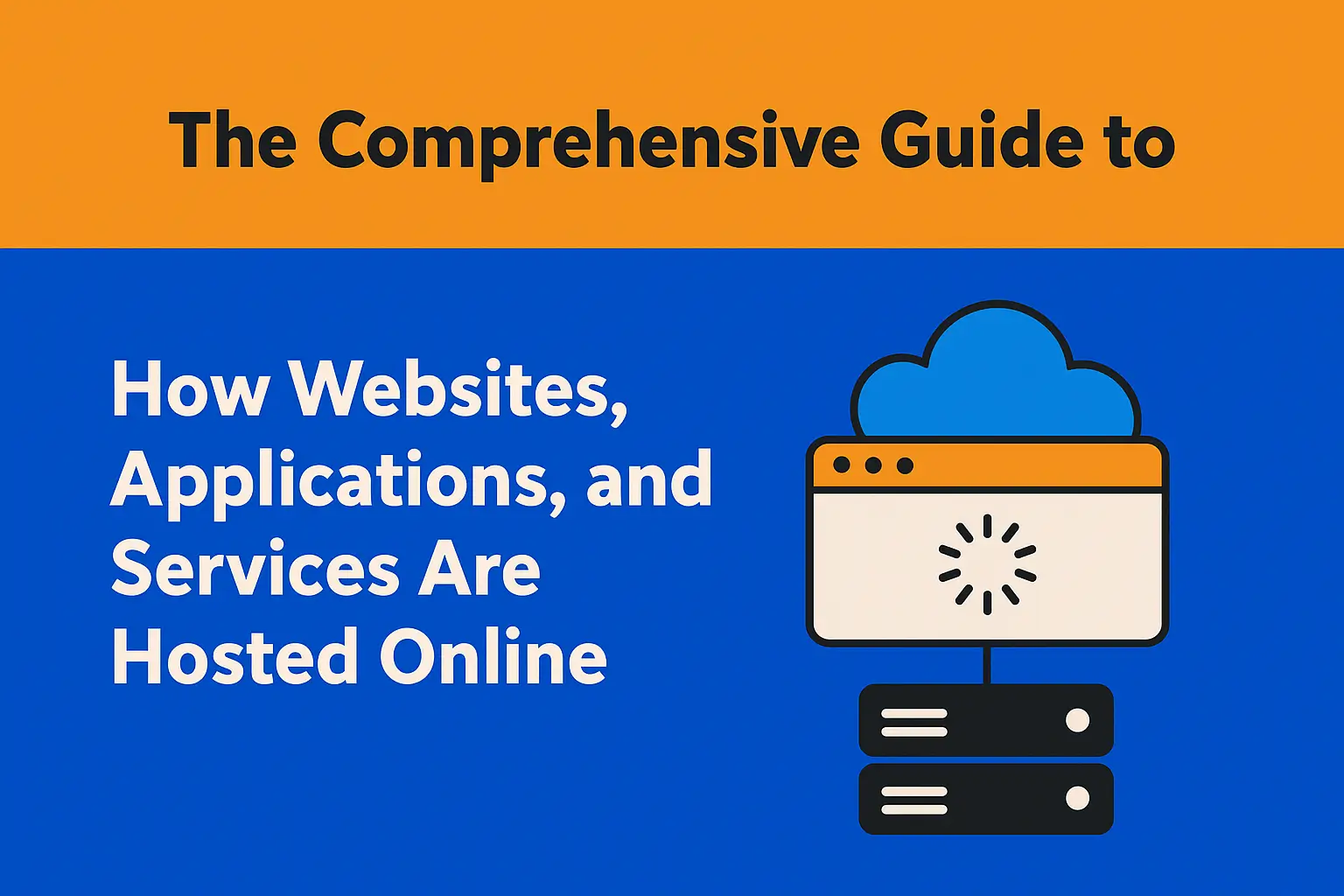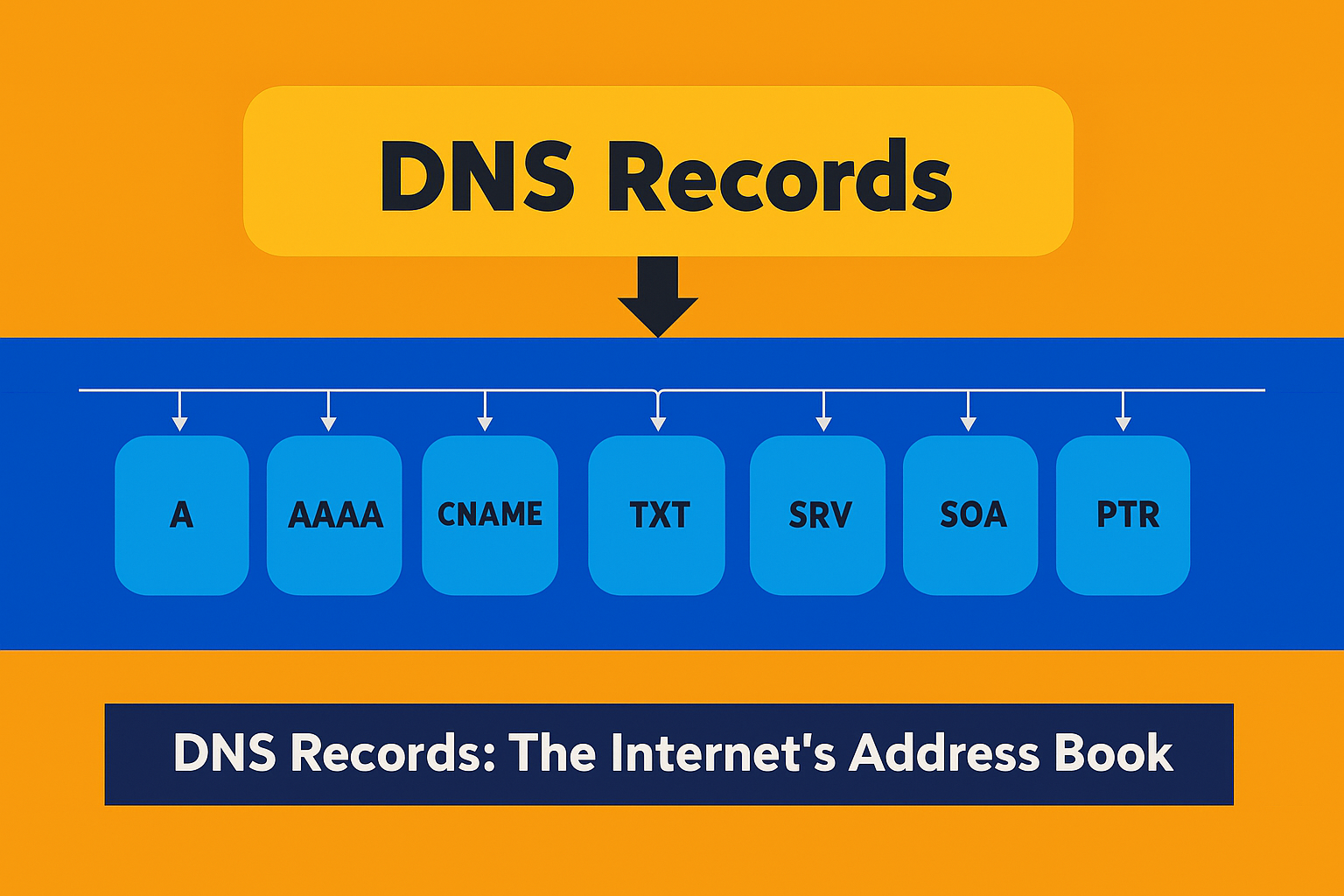
Introduction to Cloud Hosting
Cloud hosting is a modern approach to hosting websites and applications by leveraging a network of virtual and physical servers. Unlike traditional hosting solutions, which typically rely on a single server, cloud hosting utilizes the power of multiple servers to distribute resources more efficiently and provide greater flexibility and scalability. The foundation of cloud hosting lies in virtualization technology, which partitions physical servers into multiple virtual servers that can host a variety of applications and services.
The concept of cloud hosting dates back to the early 2000s, emerging from the need for more robust and scalable infrastructure solutions. Major technology companies initially developed cloud computing platforms to handle their internal processes and data storage requirements. The public release of these platforms marked a significant milestone, enabling businesses of all sizes to benefit from the same advanced technology without substantial upfront investments in hardware and maintenance.
One of the primary reasons for the popularity of cloud hosting is its ability to offer on-demand resource allocation. Businesses can easily scale their hosting resources up or down based on their current needs, ensuring optimal performance and cost-efficiency. This agility is particularly advantageous for websites and applications that experience fluctuating traffic patterns, as it helps maintain steady performance and availability during peak times without incurring excessive costs during off-peak periods.
Furthermore, cloud hosting offers enhanced reliability through redundancy. By hosting data and applications across multiple servers, the risk of downtime due to server failures is significantly minimized. If one server experiences issues, another server can seamlessly take over, ensuring continuous service availability.
Overall, cloud hosting represents a transformative shift in how businesses manage their web presence and digital operations. Its scalability, reliability, and cost-effectiveness have made it an increasingly attractive option for organizations seeking to optimize their IT infrastructure and stay competitive in a rapidly evolving technological landscape.
How Cloud Hosting Works
Cloud hosting operates on a multi-layered infrastructure designed to maximize efficiency and scalability. At its core, cloud hosting uses a network of virtual servers, typically known as the cloud, which are interconnected to handle data, applications, and resources. Unlike traditional hosting that relies on a single server, cloud hosting taps into a distributed network of servers, each contributing to a pool of resources.
The key component of cloud hosting is virtualization. Virtualization allows multiple virtual servers to run on a single physical server by abstracting the hardware layer. This process creates a flexible environment where resources such as CPU, RAM, and storage can be allocated dynamically based on demand. The virtual machine (VM) instances are housed in data centers, which are strategically located to ensure data redundancy and security.
Resource management in cloud hosting is handled via sophisticated algorithms and software that monitor usage and adjust allocations in real-time. This capability ensures that applications have the resources they need without over-provisioning, which can save costs and improve efficiency. Load balancers distribute incoming traffic across multiple servers to prevent any single server from becoming a bottleneck, adding to the resilience and reliability of the hosting environment.
Data in cloud hosting is typically stored in a distributed manner across several nodes within the cloud network. This distributed architecture provides high availability since data is replicated across multiple locations. In the event of a hardware failure, the cloud network can quickly reroute requests to another node, minimizing downtime. Additionally, automated backups and disaster recovery mechanisms are integrated into the cloud hosting framework to safeguard data integrity.
The scalability of cloud hosting is one of its most compelling features. Resources can be quickly scaled up or down based on real-time needs. This elasticity is particularly beneficial for businesses experiencing fluctuating traffic patterns, as they can seamlessly adjust their resource consumption without manual intervention. Furthermore, cloud hosting allows for horizontal scaling, where additional servers are added to distribute the load, and vertical scaling, where existing resources are enhanced.
In conclusion, the mechanics of cloud hosting are geared towards providing a robust, flexible, and cost-efficient hosting environment. Through the use of virtualization, distributed networks, and dynamic resource management, cloud hosting offers a resilient and scalable solution for modern computing needs.
Benefits of Cloud Hosting
Cloud hosting has rapidly ascended to become the preferred choice for businesses and individuals alike, driven by an array of compelling benefits over traditional hosting solutions. One of the most significant advantages is scalability. Unlike traditional hosting, where resources are limited to a single server, cloud hosting allows users to easily scale resources up or down based on real-time demand. This elasticity ensures optimal performance without the risk of overcommitting or underutilizing resources.
Another key benefit is flexibility. Cloud hosting provides unparalleled flexibility by enabling access to services and data from any location with an internet connection. This is especially advantageous for businesses with remote or distributed teams, making collaboration seamless and efficient. Additionally, the flexible pricing models offered by cloud hosting providers allow businesses to pay only for what they use, promoting cost-efficiency.
Cost-efficiency is a fundamental appeal of cloud hosting. Traditional hosting often requires significant upfront investment in hardware and ongoing costs for maintenance, upgrades, and energy. Cloud hosting eliminates these expenditures, instead offering a pay-as-you-go model that aligns expenses with usage, thereby optimizing budget allocation.
The reliability of cloud hosting is another standout feature. With traditional hosting, a single server failure can lead to downtime and data loss. In contrast, cloud hosting employs a network of servers to distribute the load, ensuring high availability and robust disaster recovery mechanisms. For instance, Amazon Web Services (AWS) boasts an impressive uptime SLA, often exceeding 99.99%, reflecting the reliability of cloud-based solutions.
Moreover, cloud hosting enhances performance. The distributed nature of cloud infrastructure means that resources can be dynamically allocated to meet workload demands, resulting in faster load times and a better user experience. According to a report by Deloitte, businesses that transition to cloud hosting often see a significant improvement in web application performance.
Finally, ease of management is a pivotal advantage. Cloud hosting platforms come with sophisticated management tools that simplify the deployment, monitoring, and management of applications and services. These automated tools reduce the administrative burden on IT staff, allowing them to focus on strategic initiatives rather than routine maintenance tasks.
Types of Cloud Hosting Solutions
Cloud hosting solutions come in various forms, each designed to cater to different business needs. Understanding these different types—public, private, and hybrid cloud hosting solutions—can help companies make informed decisions about which option best suits their operational requirements.
Public Cloud Hosting
Public cloud hosting is the most widely used form of cloud service. It offers resources such as servers and storage over the internet, managed by third-party cloud service providers. In this multi-tenant environment, multiple clients use the same infrastructure, which helps to keep costs lower compared to other types. Public cloud hosting is highly scalable, making it ideal for businesses that experience fluctuating demands. However, because the infrastructure is shared, there may be security and privacy concerns for industries dealing with sensitive data.
Private Cloud Hosting
Private cloud hosting, in contrast, is dedicated to a single organization. This service can be managed internally by the company or by an external provider, ensuring that the infrastructure is tailored exclusively to the organization’s needs. The primary advantages of private cloud hosting include enhanced security, compliance, and customization options, making it highly suitable for industries like finance, healthcare, and government entities, which require stringent data security and control. However, the costs are generally higher due to the dedicated resources and maintenance involved.
Hybrid Cloud Hosting
Hybrid cloud hosting combines the best of both public and private cloud environments, allowing data and applications to be shared between them. This model offers the flexibility to maintain sensitive operations on a private cloud while leveraging the public cloud for less-critical workloads. The hybrid approach is advantageous for businesses aiming for a balanced strategy, optimizing costs, and scaling efficiently while maintaining a high level of security and compliance for sensitive data. However, orchestrating a hybrid environment can be complex and may require robust integration and management tools.
Selecting the right type of cloud hosting solution depends greatly on a company’s specific needs, including budget, regulatory requirements, and scalability demands. By carefully considering the characteristics and advantages of public, private, and hybrid cloud hosting, businesses can choose the most suitable option to enhance their IT infrastructure and support their growth objectives.“`html
Choosing a Cloud Hosting Provider
Choosing a cloud hosting provider is a critical decision that can significantly impact your business operations. A comprehensive evaluation of various factors will ensure you select the provider that aligns best with your needs. One of the first aspects to consider is pricing. Cloud hosting providers offer varied pricing models, including pay-as-you-go and subscription-based plans. It’s imperative to analyze these models to determine which fits your budget and requirements. Additionally, hidden costs, such as data transfer fees, should also be scrutinized to avoid unexpected expenditures.
Service level agreements (SLAs) play a pivotal role in choosing a provider. SLAs outline the performance and availability standards you can expect. Focusing on uptime guarantees and compensation policies for service downtimes can mitigate potential risks. High uptime guarantees, typically in the range of 99.9% or higher, are desirable to ensure uninterrupted operations.
Customer support is another essential factor. Reliable customer support, available 24/7, can be invaluable in resolving issues promptly. Assess the various support channels, including live chat, phone, and email, and seek reviews on the responsiveness and effectiveness of the support team.
Data security is paramount in today’s digital landscape. A robust security framework including encryption, firewalls, and intrusion detection systems should be non-negotiable. Additionally, compliance with industry standards and regulations such as GDPR, HIPAA, or PCI-DSS can safeguard against legal repercussions and enhance trust among your clients.
Customization options and scalability should not be overlooked. Providers must offer flexible solutions that can adapt to your changing business needs. The ability to scale resources up or down seamlessly without affecting performance is a notable advantage.
Some leading cloud hosting providers worthy of consideration include Amazon Web Services (AWS), Microsoft Azure, and Google Cloud Platform (GCP). Each offers unique strengths, such as AWS’s comprehensive service range, Azure’s integration with Microsoft products, and GCP’s pioneering data analytics capabilities. Evaluating these options in the context of your specific requirements will guide you towards making an informed decision.
Security in Cloud Hosting
One of the paramount concerns for organizations considering cloud hosting is security. The shift from traditional on-premises infrastructures to cloud environments brings a new set of challenges and risks. However, with proper measures, cloud hosting can offer robust security solutions. Here, we explore various aspects of cloud security to understand how data is protected in the cloud.
Encryption stands at the forefront of these security measures. Both data in transit and data at rest are encrypted to prevent unauthorized access. Advanced encryption techniques ensure that even if data is intercepted, it remains unreadable without the correct decryption key. This layer of security significantly mitigates risks associated with data breaches and cyber-attacks.
Complementing encryption, firewalls serve as critical defenses against potential threats. Cloud firewalls monitor and control incoming and outgoing network traffic based on predetermined security rules. By acting as barriers between trusted and untrusted networks, they help prevent unauthorized access and potential data exfiltration.
Identity and Access Management (IAM) is another crucial element in cloud security. IAM solutions provide control over user access, ensuring that only authorized personnel can access sensitive data and resources. Features such as multi-factor authentication (MFA), role-based access control (RBAC), and automated account provisioning add layers of security, minimizing the risk of internal and external threats.
Compliance with standards and regulations is imperative for cloud service providers. Regulations such as GDPR, HIPAA, and SOC 2 outline strict requirements for data protection and privacy. Adhering to these standards not only ensures the security of cloud environments but also instills confidence in clients that their data is being handled responsibly.
Best practices for securing cloud environments include regular security assessments, updating and patching systems, and conducting employee training. Continuous monitoring and incident response plans are also essential in identifying and mitigating threats promptly.
In essence, although cloud hosting presents unique security challenges, employing a comprehensive security strategy encompassing encryption, firewalls, IAM, and compliance can ensure that sensitive data remains protected in the cloud.
Migrating to Cloud Hosting
Migrating to cloud hosting necessitates a structured approach to ensure a seamless transition of your existing services and applications. A strategic migration plan typically incorporates several vital steps aimed at minimizing disruptions and optimizing performance post-migration.
The initial phase involves a comprehensive assessment of your current IT infrastructure. Assessing your existing resources, applications, and workloads allows you to determine what can be migrated and the potential challenges you might encounter. This step is crucial for understanding not only the technical but also the financial implications of cloud migration.
Following assessment, it’s imperative to define a clear migration strategy. Different strategies such as rehosting, refactoring, or re-architecting can be employed depending on the complexity and requirements of your services and applications. Rehosting, often referred to as “lift-and-shift,” involves moving applications to the cloud with minimal changes. Refactoring, on the other hand, includes making more significant modifications to better leverage cloud capabilities.
A well-thought-out migration plan must also address challenges such as data security, application downtime, and compatibility issues. Data security is paramount; employing encryption and access controls can safeguard your data during transit. To mitigate application downtime, consider phased migration—transferring one part of your workload at a time to ensure continuous operation. Compatibility issues are best addressed through rigorous testing before full migration.
Leveraging robust migration tools and services can significantly streamline the process. Tools such as AWS Migration Hub, Google Cloud’s Migrate for Compute Engine, and Azure Migrate are designed to facilitate different aspects of migration, from initial assessment to executing the migration plan. Additionally, managed service providers (MSPs) can offer invaluable expertise and support, tailoring the migration process to suit your specific needs.
In navigating the complexities of migrating to cloud hosting, a meticulous approach combined with the right tools and strategies can enable your organization to realize the benefits of the cloud—scalability, flexibility, and cost-efficiency—while minimizing potential risks.
Future Trends in Cloud Hosting
As technology continues to evolve, the landscape of cloud hosting is set for significant shifts. One notable trend is the rise of serverless computing. This model eliminates the need for developers to manage server infrastructure, enabling them to focus solely on code execution. Serverless computing is expected to streamline operations, reduce costs, and enhance scalability for businesses of all sizes.
Another emerging trend is the adoption of multi-cloud strategies. Organizations are increasingly leveraging multiple cloud service providers to mitigate risk, optimize performance, and avoid vendor lock-in. This approach allows enterprises to select the best-in-class services from various providers, thereby maximizing efficiency and flexibility.
The integration of artificial intelligence (AI) into cloud management is also gaining traction. AI-powered tools and algorithms are being used to automate routine tasks, provide predictive analytics, and enhance security measures. By utilizing AI, businesses can achieve more efficient resource allocation, improved operational efficiency, and enhanced decision-making capabilities.
Edge computing represents another pivotal development in the cloud hosting arena. By processing data closer to the source of generation, edge computing reduces latency and enhances real-time data processing capabilities. This shift is particularly relevant for applications requiring immediate data response such as IoT devices and autonomous vehicles. As a result, we can anticipate a substantial growth in edge computing adoption in the near future.
Sustainability is an increasingly critical consideration in cloud hosting. Providers are adopting more environmentally friendly practices, such as utilizing renewable energy sources to power data centers and optimizing infrastructure to reduce energy consumption. As the demand for greener solutions grows, sustainable cloud hosting initiatives are likely to become more prevalent, aligning technology advancements with global environmental goals.
The future of cloud hosting is poised for transformative changes. By understanding and embracing these emerging trends, businesses can stay ahead of the curve and leverage cloud hosting to drive innovation, efficiency, and sustainability in the digital age.




0 Comments